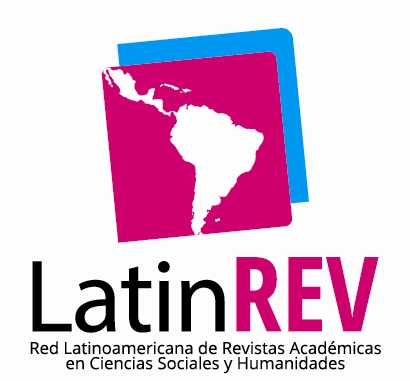Vaginosis Bacteriana. El Rol de Atopobium Vaginae y otras Bacterias Anaerobias
Resumen
La etiología de la vaginosis bacteriana (VB) es compleja y sugiere que no es un proceso microbiológico específico, si no mas bien un espectro de cambios dentro de la comunidad bacteriana que conforma la microbiota vaginal. Atopobium vaginae es un componente importante de la microbiota vaginal en la VB. Se ha descrito la resistencia de A. vaginae hacia el metronidazol, uno de los tratamientos actuales de primera línea, asi como su presencia en la biopelícula polimicrobiana asociada a la VB, siendo un mecanismo de virulencia asociado a la patogenicidad.
Descargas
Citas
Burton, J. P., Devillard, E., Cadieux, P. A., Hammond, J. A., & Reid, G. (2004). Detection of Atopobium vaginae in postmenopausal women by cultivation-independent methods warrants further investigation. Journal of clinical microbiology, 42(4), 1829–1831.
https://doi.org/10.1128/JCM.42.4.1829-1831.2004
Bradshaw, C. S., & Sobel, J. D. (2016). Current Treatment of Bacterial Vaginosis-Limitations and Need for Innovation. The Journal of infectious diseases, 214 Suppl 1(Suppl 1), S14–S20.
https://doi.org/10.1093/infdis/jiw159
Coudray, M. S., & Madhivanan, P. (2020). Bacterial vaginosis-A brief synopsis of the literature. European journal of obstetrics, gynecology, and reproductive biology, 245, 143–148.
https://doi.org/10.1016/j.ejogrb.2019.12.035
Collins, M. D., & Wallbanks, S. (1992). Comparative sequence analyses of the 16S rRNA genes of Lactobacillus minutus, Lactobacillus rimae and Streptococcus parvulus: proposal for the creation of a new genus Atopobium. FEMS microbiology letters, 74(2-3), 235–240.
https://doi.org/10.1016/0378-1097(92)90435-q
Costerton, J. W., Stewart, P. S., & Greenberg, E. P. (1999). Bacterial biofilms: a common cause of persistent infections. Science (New York, N.Y.), 284(5418), 1318–1322.
https://doi.org/10.1126/science.284.5418.1318
Chang, H. H., Larson, J., Blencowe, H., Spong, C. Y., Howson, C. P., Cairns-Smith, S., Lackritz, E. M., Lee, S. K., Mason, E., Serazin, A. C., Walani, S., Simpson, J. L., Lawn, J. E., & Born Too Soon preterm prevention analysis group (2013). Preventing preterm births: analysis of trends and potential reductions with interventions in 39 countries with very high human development index. Lancet (London, England), 381(9862), 223–234. https://doi.org/10.1016/S0140-6736(12)61856-X
Danielsson, D., Teigen, P. K., & Moi, H. (2011). The genital econiche: focus on microbiota and bacterial vaginosis. Annals of the New York Academy of Sciences, 1230, 48–58.
https://doi.org/10.1111/j.1749-6632.2011.06041.x
DeLong, K., Bensouda, S., Zulfiqar, F., Zierden, H. C., Hoang, T. M., Abraham, A. G., Coleman, J. S., Cone, R. A., Gravitt, P. E., Hendrix, C. W., Fuchs, E. J., Gaydos, C. A., Weld, E. D., & Ensign, L. M. (2019). Conceptual Design of a Universal Donor Screening Approach for Vaginal Microbiota Transplant. Frontiers in cellular and infection microbiology, 9, 306.
https://doi.org/10.3389/fcimb.2019.00306
Donders G. (2010). Diagnosis and management of bacterial vaginosis and other types of abnormal vaginal bacterial flora: a review. Obstetrical & gynecological survey, 65(7), 462–473.
https://doi.org/10.1097/OGX.0b013e3181e09621
Aguirre Chávez, J. F., Franco Gallegos, L. I., Ivett Robles Hernández, G. S., Montes Mata, K. J., & Ponce de León, A. C. (2024). Actividad Física como Estrategia Terapéutica en el Manejo de la Diabetes Tipo 2: Evidencia Actual. Estudios Y Perspectivas Revista Científica Y Académica , 4(2), 48–65. https://doi.org/10.61384/r.c.a.v4i2.197
Salazar Ayala, C. M., Maribhy Dinorha Cruz Galindo, Murillo Ortiz , B. O., Luna Ruiz, M. Ángel, & Razo Mendoza, L. F. (2024). Relación de Niveles de Endocannabinoides y Perfil Metabólico en Pacientes con Síndrome de Ovario Poliquístico. Revista Científica De Salud Y Desarrollo Humano, 5(1), 269–288. https://doi.org/10.61368/r.s.d.h.v5i1.90
Agrela Rodrigues, F. de A. (2024). Aperfeiçoamento do Método 40P/30G/30C para o Emagrecimento. Emergentes - Revista Científica, 4(1), 381–389. https://doi.org/10.60112/erc.v4i1.115
García, S. (2023). Desarrollo de productos y servicios sostenibles y ecológicamente responsables. Una revisión de la literatura, 2021. Revista Veritas De Difusão Científica, 4(2), 102–119. https://doi.org/10.61616/rvdc.v4i2.49
Martínez, O., Aranda , R., Barreto , E., Fanego , J., Fernández , A., López , J., Medina , J., Meza , M., Muñoz , D., & Urbieta , J. (2024). Los tipos de discriminación laboral en las ciudades de Capiatá y San Lorenzo. Arandu UTIC, 11(1), 77–95. Recuperado a partir de https://www.uticvirtual.edu.py/revista.ojs/index.php/revistas/article/view/179
v, H., & Quispe Coca, R. A. (2024). Tecno Bio Gas. Horizonte Académico, 4(4), 17–23. Recuperado a partir de https://horizonteacademico.org/index.php/horizonte/article/view/14
Da Silva Santos , F., & López Vargas , R. (2020). Efecto del Estrés en la Función Inmune en Pacientes con Enfermedades Autoinmunes: una Revisión de Estudios Latinoamericanos. Revista Científica De Salud Y Desarrollo Humano, 1(1), 46–59. https://doi.org/10.61368/r.s.d.h.v1i1.9
Vera Ríos, E. R., Enriquez Sarango, M. I., Sarmiento Ordinola, D. A., Valle Zambrano, J. F., & Balcázar Garzón, M. E. (2025). Impacto del Peso de la Mochila Escolar en la Postura de Estudiantes: Un Enfoque Preventivo. Ciencia Y Reflexión, 4(1), 211–232. https://doi.org/10.70747/cr.v4i1.97
Céspedes Morai, J. M. (2024). Evolución de la Industria del Turismo Sostenible en España. Ciencia Y Reflexión, 3(2), 126–144. https://doi.org/10.70747/cr.v3i2.11
Elias, S., & Banin, E. (2012). Multi-species biofilms: living with friendly neighbors. FEMS microbiology reviews, 36(5), 990–1004. https://doi.org/10.1111/j.1574-6976.2012.00325.x
Gaydos, C. A., Beqaj, S., Schwebke, J. R., Lebed, J., Smith, B., Davis, T. E., Fife, K. H., Nyirjesy, P., Spurrell, T., Furgerson, D., Coleman, J., Paradis, S., & Cooper, C. K. (2017). Clinical Validation of a Test for the Diagnosis of Vaginitis. Obstetrics and gynecology, 130(1), 181–189.
https://doi.org/10.1097/AOG.0000000000002090
Lamont, R. F., Sobel, J. D., Akins, R. A., Hassan, S. S., Chaiworapongsa, T., Kusanovic, J. P., & Romero, R. (2011). The vaginal microbiome: new information about genital tract flora using molecular based techniques. BJOG : an international journal of obstetrics and gynaecology, 118(5), 533–549. https://doi.org/10.1111/j.1471-0528.2010.02840.x
Libby, E. K., Pascal, K. E., Mordechai, E., Adelson, M. E., & Trama, J. P. (2008). Atopobium vaginae triggers an innate immune response in an in vitro model of bacterial vaginosis. Microbes and infection, 10(4), 439–446. https://doi.org/10.1016/j.micinf.2008.01.004
Menard, J. P., Fenollar, F., Henry, M., Bretelle, F., & Raoult, D. (2008). Molecular quantification of Gardnerella vaginalis and Atopobium vaginae loads to predict bacterial vaginosis. Clinical infectious diseases : an official publication of the Infectious Diseases Society of America, 47(1), 33–43. https://doi.org/10.1086/588661
Marrazzo JM, Dombrowski JC, Wierzbicki MR, et al. Safety and Efficacy of a Novel Vaginal Anti-infective, TOL-463, in the Treatment of Bacterial Vaginosis and Vulvovaginal Candidiasis: A Randomized, Single-blind, Phase 2, Controlled Trial. Clinical Infectious Diseases : an Official Publication of the Infectious Diseases Society of America. 2019 Feb;68(5):803-809. DOI: 10.1093/cid/ciy554.
Nasioudis, D., Linhares, I. M., Ledger, W. J., & Witkin, S. S. (2017). Bacterial vaginosis: a critical analysis of current knowledge. BJOG : an international journal of obstetrics and gynaecology, 124(1), 61–69. https://doi.org/10.1111/1471-0528.14209
Polatti F. (2012). Bacterial vaginosis, Atopobium vaginae and nifuratel. Current clinical pharmacology, 7(1), 36–40. https://doi.org/10.2174/157488412799218824
Peebles, K., Velloza, J., Balkus, J. E., McClelland, R. S., & Barnabas, R. V. (2019). High Global Burden and Costs of Bacterial Vaginosis: A Systematic Review and Meta-Analysis. Sexually transmitted diseases, 46(5), 304–311. https://doi.org/10.1097/OLQ.0000000000000972
Rodriguez Jovita, M., Collins, M. D., Sjödén, B., & Falsen, E. (1999). Characterization of a novel Atopobium isolate from the human vagina: description of Atopobium vaginae sp. nov. International journal of systematic bacteriology, 49 Pt 4, 1573–1576.
https://doi.org/10.1099/00207713-49-4-1573
Rodríguez A , Mónica, González Lorenzo, Ariadna, & Carbonell Hernández, Teresa. (2014). Diagnóstico de vaginosis bacteriana. Aspectos clínicos y estudios microbiológicos. Revista Médica Electrónica, 36(3), 325-338. Recuperado en 12 de febrero de 2025, de
http://scielo.sld.cu/scielo.php?script=sci_arttext&pid=S1684-18242014000300009&lng=es&tlng=es.
Srinivasan, S., & Fredricks, D. N. (2008). The human vaginal bacterial biota and bacterial vaginosis. Interdisciplinary perspectives on infectious diseases, 2008, 750479.
https://doi.org/10.1155/2008/750479
Swidsinski, A., Mendling, W., Loening-Baucke, V., Swidsinski, S., Dörffel, Y., Scholze, J., Lochs, H., & Verstraelen, H. (2008). An adherent Gardnerella vaginalis biofilm persists on the vaginal epithelium after standard therapy with oral metronidazole. American journal of obstetrics and gynecology, 198(1), 97.e1–97.e976. https://doi.org/10.1016/j.ajog.2007.06.039
Sherrard, J., Wilson, J., Donders, G., Mendling, W., & Jensen, J. S. (2023). 2023 update to 2018 European (IUSTI/WHO) guideline on the management of vaginal discharge. International journal of STD & AIDS, 34(10), 745. https://doi.org/10.1177/09564624231179277
Van der Veer, C., van Houdt, R., van Dam, A., de Vries, H., & Bruisten, S. (2018). Accuracy of a commercial multiplex PCR for the diagnosis of bacterial vaginosis. Journal of medical microbiology, 67(9), 1265–1270. https://doi.org/10.1099/jmm.0.000792
Derechos de autor 2025 Carol Castro Castrillo , Carolina Duarte Artavia

Esta obra está bajo licencia internacional Creative Commons Reconocimiento 4.0.











.png)




















.png)
1.png)


